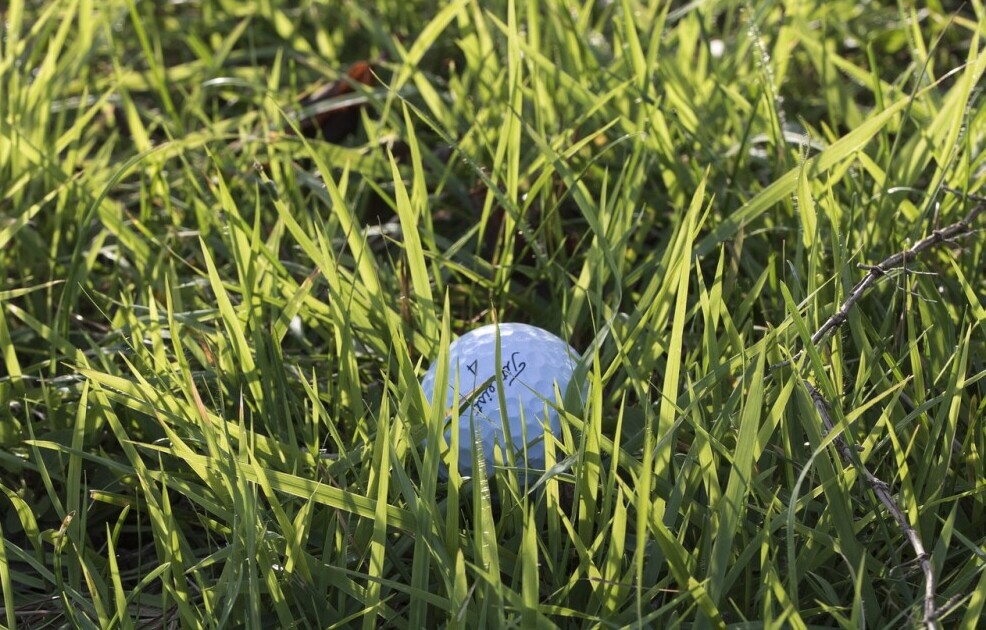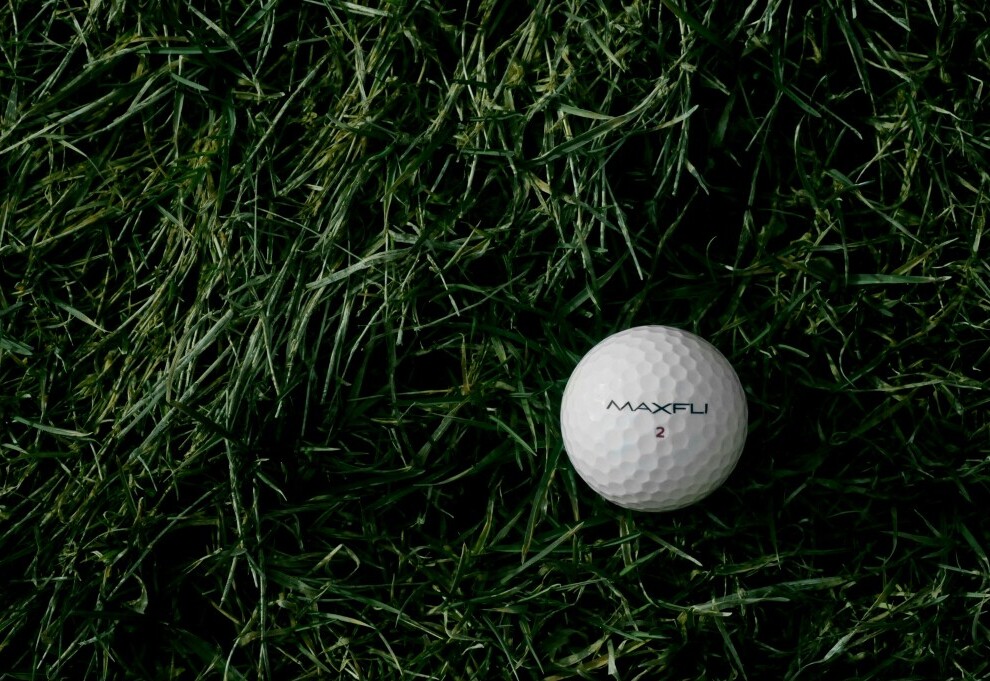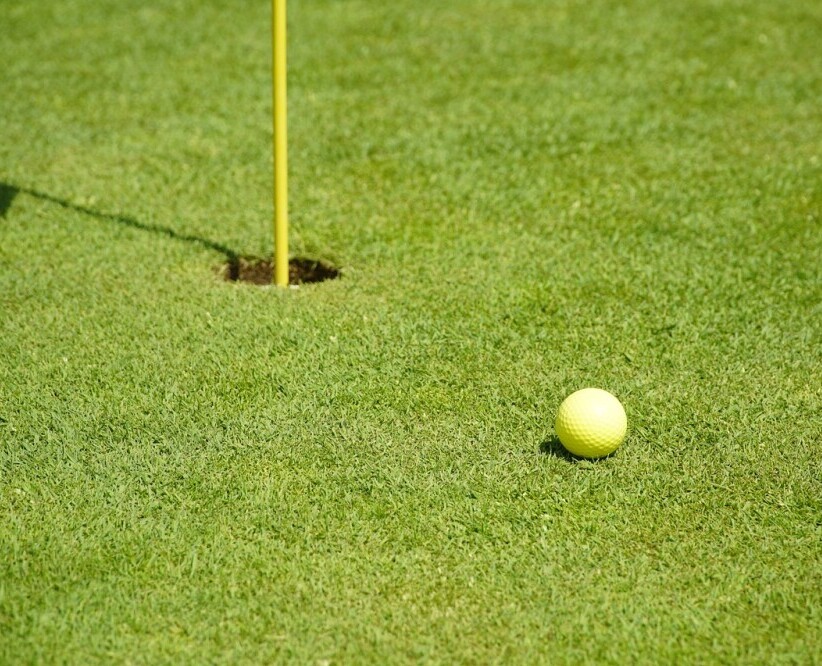What’s The Rough In Golf?


Fore! Quick note: a few links here are affiliate links. If you snag gear through them, I earn a small commission — no extra strokes added to your game.
The rough is a clever design element used by course architects to challenge golfers. It usually frames the fairways, acting as a buffer between them and the out-of-bounds areas or hazards. Characterized by longer, thicker grass, the rough can vary in difficulty depending on the course’s maintenance practices or its natural terrain. The golf viking is back to talk about the rough.
Unlike the neatly manicured fairway and the meticulously trimmed green, the rough is intentionally left wilder and more untamed. This leads to some unpredictable situations once your golf ball lands there, which is precisely why designers use it strategically. Each course is different and can present its own challenges, but you can end up with a wildly difficult lie if you end up in the wrong cut of rough.
Its purpose is to keep golfers on their toes by ensuring they plan their shots more carefully. You can think of it as a test of skill, where your ability to adapt and apply technique is given a thorough workout. The difference in grass height and density can significantly affect how your ball behaves, making shot execution from the rough more challenging but also potentially more rewarding if you manage it well. So what makes playing from the rough so difficult?
If you’re struggling to advance the ball from tough lies, your equipment may be holding you back. See how beginner-friendly sets can help in our guide to the top 10 iron sets for beginners.
Ready to level up your golf game? Click here.

The Challenges of the Rough: Why It’s Considered Difficult
The rough often holds an intimidating reputation, and that’s primarily due to its impact on the ball’s behavior. The coarse, tall grass can swallow a ball, making it hard to see and even harder to control during a shot. Unlike the uniform fairway, the rough adds an element of unpredictability that can throw off your game if you’re not prepared. It can make your shot much more challenging than when hitting your ball from the fairway.
One of the primary reasons golfers struggle in the rough is because it significantly alters the ball’s trajectory and reduces the spin. When the grass catches the clubface, it can close it, causing the shot to go off line. This means you often have less control and more chance of ending up off course. So it’s bad enough you wound up in the rough in the first place, but you could possibly make your situation even worse if you don’t know how to hit your ball out of the rough.
Many golfers hold the misconception that the rough is simply a negative aspect of the course. However, with the right perspective, it can be seen as an opportunity to showcase strategic thinking and adaptability. Instead of just aiming to escape, consider how you can make the most of your situation. Adopting a positive mindset about these challenges can enhance your overall game. After all, even the best golfers end up in the rough, so it’s something that you will encounter on your golf journey. Best to know how to handle it when you get there.
Getting out of the rough often comes down to your short game precision. Learn how to sharpen those skills in our post on short game mastery.

Mastering Shots from the Rough: Techniques for Success
Hitting from the rough requires a shift in technique and mindset. The first step is choosing the right club, as it can make or break your escape. Typically, a more lofted club like a wedge can help you get the ball airborne, especially if the grass is dense. Remember, power isn’t your friend here; focus on precision and technique instead.
It’s going to prove much more important to get your ball into a good one position for your next shot. The rough significantly reduces your shot length, so rather than going for sheer power and distance, you will want to focus on placing your ball in the best spot.
Swing adjustments are crucial. Make a slightly steeper attack on the ball to minimize the amount of grass between the clubface and the ball. This reduces the impact of the rough on your shot. It’s about clean contact rather than distance. It’s vital that you make solid contact with your ball while swinging from the rough. Making poor contact can prove costly, and you could wind up in a tough position.
Dealing with bad lies is also about strategic planning. Assess your situation carefully—sometimes aiming for the green isn’t the best move. Instead, consider playing to a safer area to set up your next shot. Hit to s place on the course that you know will give you a better shot to get on the green. Even if it means hitting the ball a little shorter, it’s important to not compound your mistakes. Get yourself into good positions on the fairway, and you won’t be fighting to get your ball far enough from the rough.
Saving par from the rough isn’t just about the first shot out. It involves thinking ahead and making calculated decisions to preserve your score. Using the rough to strengthen your recovery game can add a valuable dimension to your skill set. Hitting your ball into the rough isn’t great, but with smart play you can keep it from hurting your score too much.
The rough can change how the ball spins and reacts when it lands. To understand this effect better, read our article on understanding golf ball spin.

Playing Smart: Staying in the Fairway for Better Scores
Accuracy and smart course management are your allies in keeping the ball out of the rough. Strategizing your shots involves more than just swing mechanics. It’s about understanding the layout and using your strengths to your advantage. Only you can know how well you hit each of your clubs, so make the best educated decision based off of how you play with your clubs.
An important part of staying in the fairway is knowing when to play it safe. Risky shots might pay off occasionally, but emphasis should be on consistency. Opt for a reliable club and a conservative line when needed. This approach lowers your chances of finding the rough. Smart play can keep you shooting from the fairways instead of struggling from the rough. The best strategy would be to not hit into the rough at all, that way you won’t have to worry about strategizing your shots based off of your bad lie.
Staying in the fairway provides an opportunity for better scores by allowing you to focus on precision rather than recovery. It often leads to easier approach shots, improving your chances of making birdies and pars without the added stress of rough escapes. It can save you many headaches out on the golf course and lets you play your game more relaxed. Having to shoot from the rough constantly can keep you from getting into a rhythm.
Regular practice with fairway shots can boost your confidence, which naturally spills over into how you handle the rough when you do land there. It’s a win-win; you’re bolstering skills that aid you all over the course. So hitting from the fairway will save you strokes, but when you do wind up in the rough inevitably, now you will know how to keep from making the situation worse. I’ll see you out on the golf course, hopefully on the fairway!
Even if you end up in the rough off the tee, a reliable putter can help you recover on the green. Take a look at our breakdown of the most accurate golf putters.


